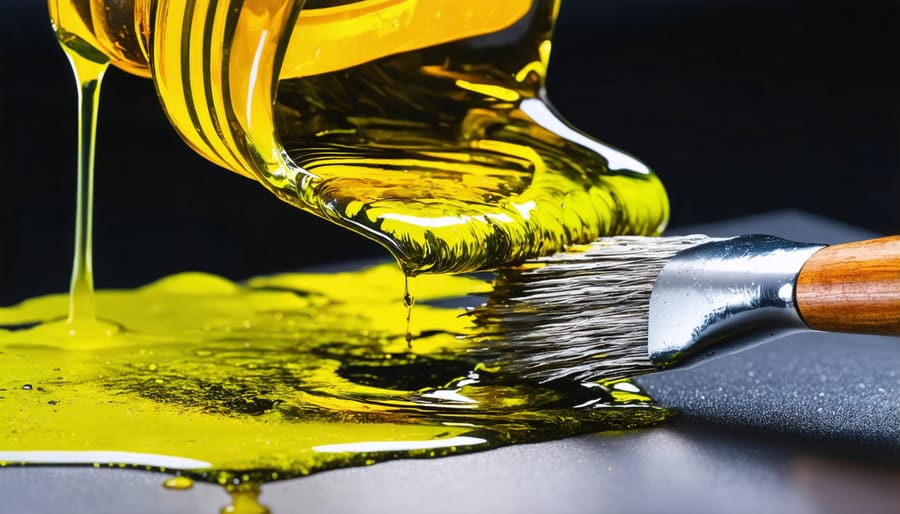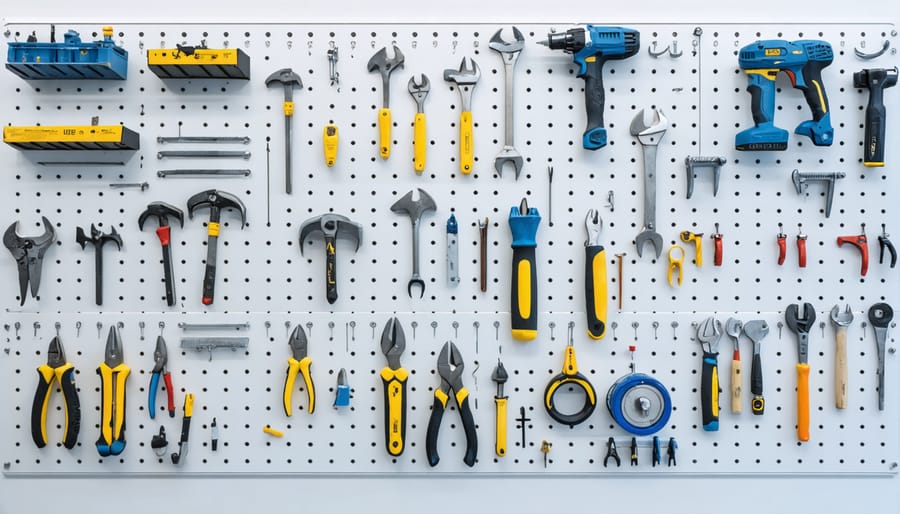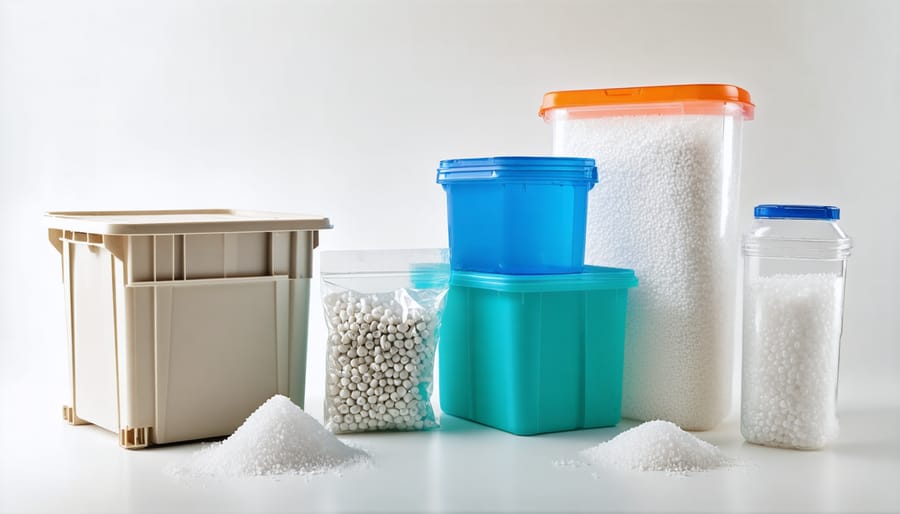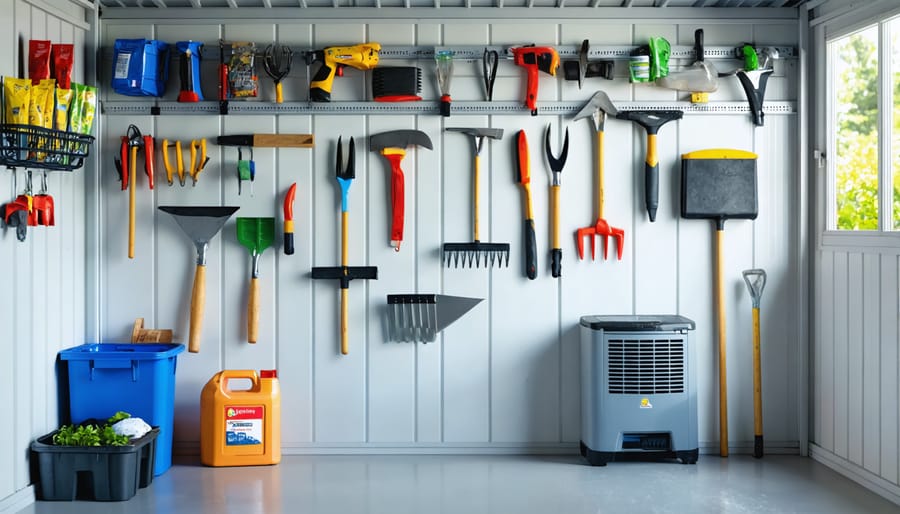Protect your valuable tools from destructive rust with a multi-layered defense strategy that starts today. Moisture is the silent enemy lurking in every shed, slowly corroding metal surfaces and compromising the integrity of your essential equipment. By implementing proper ventilation, using moisture-absorbing products, and creating smart storage solutions, you can extend the life of your tools by years while maintaining their performance and value. Whether you’re a weekend DIY enthusiast or a professional craftsperson, preventing rust damage is far easier—and more cost-effective—than replacing corroded tools. This guide will walk you through proven methods to keep your tools pristine, even in challenging storage conditions, ensuring they’re always ready when you need them.
Creating the Perfect Storage Environment
Moisture Control Solutions
Effective controlling moisture in your shed is crucial for preventing tool rust. Start by ensuring proper ventilation through strategically placed vents or windows that create cross-airflow. Install a battery-powered fan to keep air circulating, especially during humid summer months.
A quality dehumidifier can be a game-changer in maintaining optimal humidity levels. Choose a model specifically sized for your shed’s dimensions, and remember to empty it regularly. For a budget-friendly alternative, try moisture absorbers like silica gel packets or calcium chloride containers. Place these near your tools and replace them every few months.
Consider installing a vapor barrier beneath your shed’s flooring and adding weatherstripping around doors and windows. These simple additions significantly reduce ground moisture from seeping in. During particularly damp seasons, running a small electric heater occasionally can help drive out excess moisture and maintain a dryer environment.
Don’t forget to check your shed’s roof and walls for leaks regularly, as even small water intrusions can create persistent humidity issues. A well-ventilated, moisture-controlled environment is your best defense against rusty tools.
Smart Tool Organization
Smart organization isn’t just about keeping things tidy – it’s crucial for preventing rust. Start by spacing your tools with enough room for air circulation, avoiding the temptation to stack them tightly together. Install pegboards or magnetic strips on your shed walls to keep tools elevated and separated, preventing moisture from collecting between surfaces.
Consider using open-design shelving units that allow air to flow freely. When storing power tools or hand tools in drawers or toolboxes, place silica gel packets between layers to absorb excess moisture. For larger tools, utilize wall-mounted racks or free-standing organizers that keep items off the ground where dampness often accumulates.
Create designated zones for different types of tools, keeping frequently used items at eye level and ensuring nothing touches the shed walls directly. Line your storage containers and drawers with anti-moisture mats or foam padding to provide an additional barrier against condensation. Remember to leave space between tools and containers to promote proper ventilation – cramming tools together creates perfect conditions for rust to develop.
Protective Treatments and Coatings
Oil-Based Protection
Oil-based protection is one of the most effective ways to shield your tools from rust, and the best part is you probably already have some of these products in your garage. WD-40 is a popular choice among DIY enthusiasts, creating a protective barrier that repels moisture while also helping to loosen existing rust. Simply spray a light coat on your tools after each use, paying special attention to metal surfaces and moving parts.
Mineral oil is another excellent option that’s gentle yet effective. After cleaning your tools thoroughly, apply a thin layer using a clean cloth. This creates a protective barrier that prevents moisture from reaching the metal surface. For woodworking tools, boiled linseed oil not only prevents rust but also helps maintain wooden handles.
Many professionals swear by 3-in-1 oil for its versatility and long-lasting protection. It’s particularly effective on hinged tools like pliers and scissors, as it both protects and lubricates. For power tools, consider using specialized tool oils that offer both rust protection and proper lubrication.
Remember to reapply your chosen oil every few months or after heavy use. A good rule of thumb is to wipe down tools with oil before extended storage periods, especially during humid seasons. While applying, use lint-free cloths to avoid leaving behind fibers that could trap moisture against the metal surface.

Anti-Rust Sprays and Coatings
Anti-rust sprays and coatings are your first line of defense against tool corrosion in your shed. When organizing your tool storage, make sure to have these protective products on hand. Popular options include WD-40, Rust-Oleum, and Boeshield T-9, each offering unique benefits for different tool types.
To apply these products effectively, start with a clean, dry surface. Spray the coating evenly across your tools, paying special attention to metal surfaces and joints. For hand tools, apply a light coat and wipe off any excess with a clean cloth. Power tools require a bit more care – ensure you protect sensitive parts like switches and motors while applying the spray.
Many DIY enthusiasts swear by silicone-based sprays for their long-lasting protection and water-resistant properties. These create an invisible barrier that doesn’t affect tool grip or functionality. For heavy-duty protection, consider paste wax or specialized tool preservatives that create a thicker protective layer.
Remember to reapply these coatings every few months, especially if you frequently use your tools outdoors. A quick spray after each use can significantly extend the life of your tools. For items that see less frequent use, apply a coating before storing them away, and you’ll find them ready for action when you need them next.
Keep your favorite anti-rust spray readily accessible in your shed for quick touch-ups, and make it part of your regular tool maintenance routine.

Smart Storage Solutions
Tool Storage Containers
Selecting the right storage containers for your tools is crucial in preventing rust formation. Airtight plastic containers with rubber seals work exceptionally well, as they create a moisture-resistant barrier between your tools and the humid shed environment. Look for containers with built-in organization systems and removable trays to keep tools separated and easily accessible.
Metal toolboxes can also be effective when properly maintained, but be sure to line them with moisture-absorbing liner material or add silica gel packets to combat condensation. Many DIY enthusiasts swear by heavy-duty plastic tool chests with weather-stripping around the edges, which provide excellent protection while allowing for better organization.
For smaller tools, consider using mason jars with airtight lids, adding a few grains of rice or silica gel at the bottom to absorb moisture. Clear storage containers are particularly useful as they allow you to quickly identify tools without opening multiple boxes. Whatever container you choose, ensure it’s elevated slightly off the ground using a wooden pallet or shelf to prevent moisture from seeping in from below.
Wall Storage Systems
Wall-mounted storage solutions are essential for keeping your tools dry and well-organized. Start by installing a sturdy pegboard system, which allows for flexible tool arrangement and keeps items off the floor where moisture can accumulate. Use rust-resistant hooks and hangers specifically designed for tool storage, and leave enough space between tools to promote air circulation.
Consider installing a combination of magnetic strips for metal tools, heavy-duty hooks for power tools, and dedicated racks for long-handled garden implements. Position these storage solutions away from windows and doors where rain or humidity might seep in. For additional protection, apply a thin coat of mineral oil to metal tool holders and mounting hardware.
Create zones on your wall system based on tool usage frequency, keeping commonly used items at eye level. Install a small shelf above your pegboard to hold moisture-absorbing products like silica gel packets or dehumidifying crystals. Remember to leave a few inches of clearance between the wall and your tools to allow air movement and prevent condensation from forming behind them.
For heavier items, use proper wall anchors and consider installing a treated wooden backing board to distribute weight evenly and provide an additional moisture barrier.
Silica Gel and Other Moisture Absorbers
Silica gel packets, those small sachets you often find in new shoes or electronics, are excellent moisture absorbers for your tool storage. Don’t throw these away – collect and reuse them in your tool chest drawers or cabinets. Place several packets in strategic locations where moisture tends to accumulate, especially in corners and near metal tools.
For larger storage spaces, consider using rechargeable silica gel containers or dedicated moisture absorbers designed for tool storage. These products typically change color when saturated, letting you know exactly when they need to be renewed. Simply heat them in the oven according to manufacturer instructions to reactivate their moisture-absorbing properties.
Another effective option is using calcium chloride dehumidifiers, which you can find at most hardware stores. These work particularly well in larger sheds and can collect surprising amounts of moisture. Place them on high shelves or mount them on walls, keeping them away from direct contact with your tools.
Remember to check and replace or recharge your moisture absorbers regularly, especially during humid seasons. This simple maintenance step can significantly extend the life of your tools.

Maintenance Schedule
Protecting your tools from rust requires a consistent maintenance schedule alongside regular shed maintenance. Set aside time every month to inspect and clean your tools, paying special attention to any signs of surface rust or moisture damage. After each use, wipe down tools with a clean, dry cloth to remove dirt and moisture. Apply a light coat of protective oil every three months, focusing on metal surfaces and moving parts.
Create a quarterly checklist that includes:
– Thorough cleaning of all tools
– Checking for rust spots
– Applying rust inhibitor or protective oil
– Inspecting shed seals and weatherstripping
– Testing dehumidifier function (if installed)
During humid seasons, increase maintenance frequency to bi-weekly checks. For power tools, remove batteries and store them separately in a climate-controlled space. Remember to keep your tools organized and elevated off the ground, ensuring proper air circulation. This simple routine will significantly extend the life of your tools and maintain their functionality year-round.
Protecting your tools from rust doesn’t have to be complicated or time-consuming. By implementing proper storage solutions, maintaining adequate ventilation, using dehumidifiers, and regularly cleaning and oiling your tools, you can significantly extend their lifespan. Remember, consistent maintenance is far easier and more cost-effective than replacing rusty tools. Make tool care part of your regular routine, and you’ll enjoy reliable, rust-free equipment for years to come. A little effort today saves both money and frustration tomorrow.





Leave a Reply